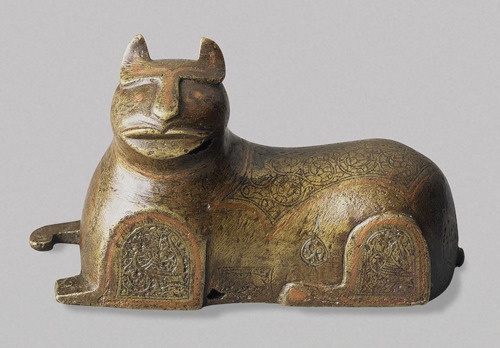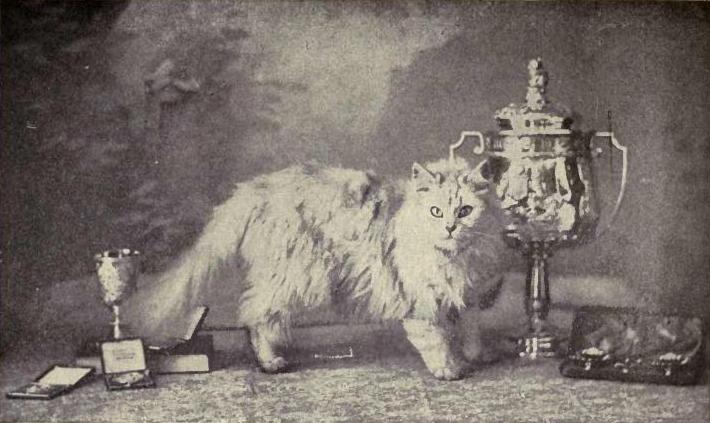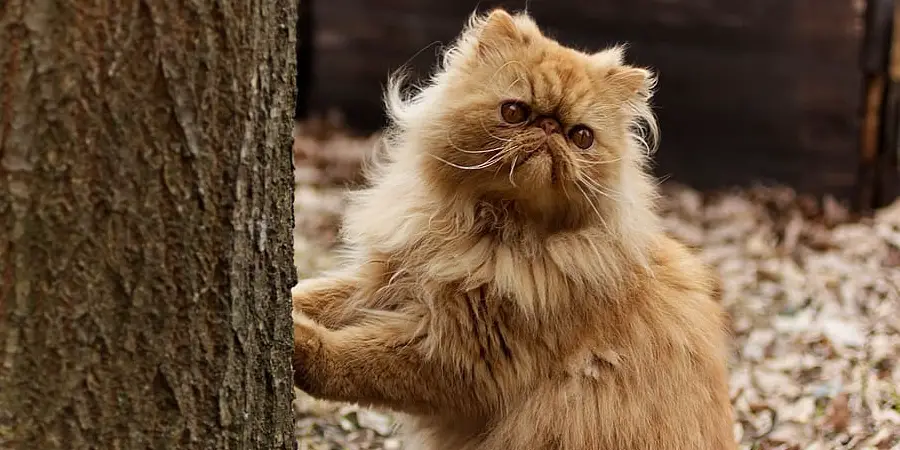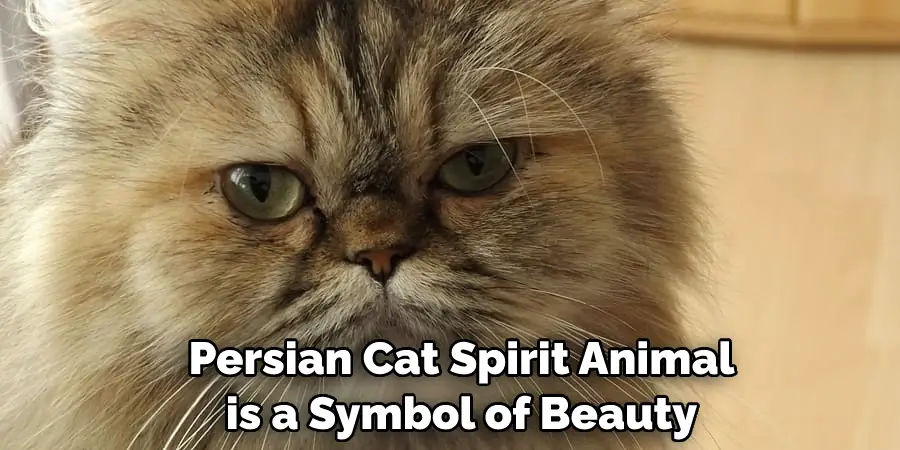Are you a cat lover who is fascinated by mythology and folklore? If so, then you’re in for a treat! “Persian Cats in Mythology and Folklore” is an exciting product that explores the captivating world of Persian cats in traditional tales and legends. This website, “http://persiancatdude.com,” is dedicated to providing comprehensive and engaging content about Persian cats, and it’s looking to expand by adding more posts that not only provide reliable information but also resonate with the interests of its audience. The goal is to create posts that people will enjoy reading and actively search for. If you’re looking for topics that are both educational and intriguing, this article will captivate your interest. Plus, at the end of each post, you’ll find a list of 10 frequently asked questions about Persian cats, and their corresponding answers to further deepen your knowledge.

Persian Cats in Mythology and Folklore
Persian cats have a rich history in mythology and folklore from various cultures around the world. These elegant and majestic felines have captivated the human imagination for centuries. In this article, we will delve into the origins and significance of Persian cats in mythology, exploring their presence in Egyptian, Greek, Persian, Asian, Norse, African, Native American, and European folklore.
The Origin of Persian Cats in Mythology
Ancient Depictions of Persian Cats In ancient artworks and manuscripts, Persian cats have been depicted with regal grace and beauty. These depictions date back thousands of years, suggesting that Persian cats have been treasured companions and subject of fascination since ancient times. The sculptural depictions found in ancient Persian ruins, such as Persepolis and Pasargadae, showcase the elegance of Persian cats and their esteemed status in ancient society.
The Perceived Divine Nature of Persian Cats Persian cats were believed to possess divine qualities in many ancient cultures. Their graceful movements, striking eyes, and luxurious coats were often associated with celestial beings and deities. These cats were revered for their elegance and perceived connection to the otherworldly realms.
Guardians and Protectors in Mythology In various mythological tales, Persian cats are portrayed as guardians and protectors. They are often seen as companions to gods and goddesses and entrusted with the task of safeguarding sacred places and objects. The belief in the protective abilities of Persian cats has shaped their image as mystical creatures with a deep connection to the spiritual realm.
Persian Cats in Egyptian Mythology
The Sacred Status of Cats in Ancient Egypt In ancient Egypt, cats, including Persian cats, held a highly revered and sacred status. They were considered to be the earthly incarnation of the goddess Bastet, the feline deity associated with protection, fertility, and motherhood. Cats were cherished companions and were even mummified after death, signifying their esteemed position in Egyptian society.
Bastet – The Cat Goddess Bastet, also known as Bast, was a prominent goddess in ancient Egyptian mythology. She was often depicted with the head of a lioness or domestic cat. As the goddess of home, fertility, and protection, Bastet was believed to bring good fortune, ward off evil spirits, and safeguard households. Persian cats, as a representation of Bastet, were regarded as bringers of blessings and divine protection.
Cats as Guardians of the Underworld In Egyptian mythology, cats were also associated with the afterlife and were believed to accompany souls on their journey to the realm of the dead. It was believed that cats possessed the ability to navigate between the worlds and protect the departed from any malevolent forces. This connection to the underworld further emphasized the mystical and powerful nature of Persian cats.
Persian Cats in Greek Mythology
The Influence of Egyptian Culture on Greek Mythology Greek mythology drew inspiration from various cultures, including Egyptian mythology. As a result, the presence of cats, including Persian cats, can be found in Greek mythological tales. The admiration for felines as graceful and enigmatic creatures transcended cultural boundaries and became a part of Greek mythology.
Cats as Companions of Greek Deities In Greek mythology, cats were often portrayed as companions to gods and goddesses. These cats were seen as symbols of grace, independence, and mystery, embodying the qualities associated with divinity. Persian cats, with their regal appearance and enigmatic aura, were frequently represented as the chosen companions of powerful deities.
Hera and Her Sacred Cats Hera, the queen of the gods in Greek mythology, was closely associated with Persian cats. The goddess of marriage and family, Hera was believed to have a particular fondness for these majestic felines. It was believed that Persian cats served as her loyal companions, providing her with companionship and divine wisdom.
Persian Cats in Persian Mythology
Persian Cats in the Shahnameh The ancient Persian epic, the Shahnameh, is filled with mythical tales and creatures, including Persian cats. These cats are often depicted as loyal companions to heroes, warriors, and kings, accompanying them on their extraordinary adventures. In Persian mythology, the courage, intelligence, and elegance of Persian cats are celebrated as symbols of nobility and valor.
Persian Cats as Symbols of Royalty In Persian mythology, Persian cats are closely associated with royalty and dignity. Their regal appearance and graceful demeanor reflect the attributes desired in leaders and rulers. It is believed that Persian cats brought good fortune and prosperity to the households of the nobility and were revered for their association with power and prestige.
Persian Cats as Magical Creatures Persian cats are also regarded as magical creatures in Persian mythology. Their enchanting presence is often linked to mystical abilities and supernatural powers. It is believed that Persian cats possess the ability to ward off evil spirits, bring good luck, and even grant wishes to those they deem worthy. Their presence in folklore and mythology reflects the fascination and admiration for their ethereal qualities.
Persian Cats in Asian Mythology
Persian Cats in Japanese Mythology In Japanese mythology, cats play a significant role, known as “Maneki-neko” or “beckoning cat.” These cats are believed to bring good luck and fortune to their owners. While the breed of these cats is not specifically mentioned, the stylized representations often resemble Persian cats. They are often depicted with one paw raised in a beckoning gesture, inviting blessings and prosperity.
Persian Cats in Chinese Mythology In Chinese mythology, cats, including Persian cats, are often associated with wealth and prosperity. The “Lion Cat” or “Fu” cat is a popular symbol in Chinese folklore, representing good fortune, protection, and abundance. These cats, with their dignified appearance and luxurious coats, embody the qualities of prosperity and success.
Persian Cats in Indian Mythology In Indian mythology, cats have a complex and varied symbolism. They are associated with fertility, protection, and divinity. The goddess Durga, often depicted riding a lion or tiger, is also sometimes depicted with a cat by her side. This cat is believed to be her companion and symbolizes her nurturing and protective nature. While the specific breed of the cat is not mentioned, Persian cats’ regal aura aligns with the majestic qualities associated with mythical felines in Indian mythology.

Persian Cats in Norse Mythology
Cats in Norse Mythology Cats hold a unique place in Norse mythology, with tales of their cunning and mystical attributes. Norse people associated cats with magic, agility, and independence. Cats were believed to be able to travel between worlds and possess knowledge and foresight. These feline creatures were often associated with the goddess Freyja.
The Role of Cats in Norse Folklore In Norse folklore, cats are often depicted as companions and familiars of witches and seers. They are believed to possess a deep connection to the spirit world and play a vital role in practicing magic. Their association with witches and seers further enhances their mysterious and enigmatic reputation in Norse mythological tales.
The Cat Freyja Freyja, the goddess of love, beauty, and fertility, had a deep affinity for cats in Norse mythology. It is said that she possessed two magical cats, who helped her in her travels. These cats were believed to pull her chariot and served as her constant companions. The connection between Freyja and cats underscores the mystical and revered nature of Persian cats in Norse mythology.
Persian Cats in African Mythology
Cats in African Folklore Throughout the African continent, cats are a recurring motif in folklore and mythology. They are often associated with various qualities such as cunning, transformation, and wisdom. In different African cultures, cats are revered as protectors, guides, and symbols of ancestral spirits.
Persian Cats in Egyptian Folklore Given the historical connection between Egypt and Persia, Persian cats appear in Egyptian folklore as well. They are perceived as guardians of sacred places and were believed to possess the ability to protect against evil spirits. Their connection to Egyptian mythology extends their role as esteemed creatures in African folklore.
Leopard Spirits in African Mythology Leopards, although not specifically Persian cats, hold great significance in African mythology. They are considered powerful and magical beings, associated with the spirit world and the ability to traverse between realms. Leopards are often portrayed as animal guides, protectors, and symbols of strength and grace.

Persian Cats in Native American Folklore
Cats in Native American Mythology In Native American cultures, cats are not as prevalent in mythology compared to other animals. However, they do hold symbolic meaning in certain tribes. Cats are often associated with stealth, agility, and mystery. They are sometimes seen as guardians of sacred spaces or as companions to spirits.
Cat Spirits in Cherokee Beliefs Among the Native American Cherokee tribe, cats are believed to possess spiritual powers. Cats were thought to be able to see things that remain hidden from human eyes and were revered as guardians against negative energies. Their watchful presence and connection to the spirit world make them essential figures in Cherokee beliefs.
The Guardian Panther In Native American folklore, the panther is often associated with the qualities attributed to Persian cats. The panther is seen as a guardian figure, protecting individuals from harm and guiding them on their spiritual journeys. While not specifically Persian cats, the panther’s revered status in Native American folklore assimilates the mystical and protective nature typically associated with Persian cats.
Persian Cats in European Folklore
The Cats of Witches and Magic In European folklore, cats and witchcraft have a long association. Cats are often depicted as familiars, supernatural beings summoned by witches to aid in their magical practices. These cats were believed to possess knowledge of the spirit world and possessed the ability to protect their witch companions.
Cats as Familiars in European Folklore As familiars, cats were said to assist witches in their spells and rituals, providing both guidance and protection. In European folklore, the cat’s keen senses, nocturnal nature, and mysterious behavior contributed to their association with magic and mysticism. Persian cats, with their alluring appearance, often embody the essence of the enigmatic and mystical familiars.
The Cunning and Mysterious Black Cat It is impossible to discuss cats in European folklore without mentioning the black cat. Black cats were believed to possess supernatural powers and were often associated with witchcraft and luck. They were both feared and revered, with their presence believed to bring either good fortune or misfortune. Persian cats, including the black variety, held a place in European mythology as the embodiment of mystery and cunning.

Myths and Superstitions About Persian Cats
The Nine Lives of Persian Cats One of the most enduring myths about cats, including Persian cats, is the belief in their ability to have nine lives. This myth has its roots in ancient Egyptian mythology, where cats were believed to possess multiple souls. The idea of Persian cats having nine lives has become a popular superstition, symbolizing their resilience and ability to overcome adversity.
Persian Cats and Good Luck Persian cats are often associated with good luck in various cultures and folklore. Their graceful presence and enchanting appearance have led many to believe that having a Persian cat in the home brings blessings and abundance. This belief in Persian cats as bringers of good fortune has made them highly sought after and cherished companions.
Superstitions Surrounding White Persian Cats White Persian cats, with their pristine coats and striking beauty, have attracted particular superstitions. In some cultures, white cats are considered harbingers of good luck and purity. However, in other cultures, white cats are believed to be omens of misfortune or even associated with witchcraft. These superstitions illustrate the dichotomy surrounding the symbolism of Persian cats, with white cats holding a unique place in the realm of myth and folklore.
Overall, the mythology and folklore surrounding Persian cats portray these majestic felines as mystical creatures with divine connections, guardians of sacred spaces, and bringers of fortune. Their elegant appearance, independent nature, and enigmatic aura have fascinated humans throughout history, leaving an indelible mark in various mythological tales and cultural beliefs. Persian cats continue to inspire awe and admiration in modern times, transcending their role as beloved companions to become mythical beings in their own right.
